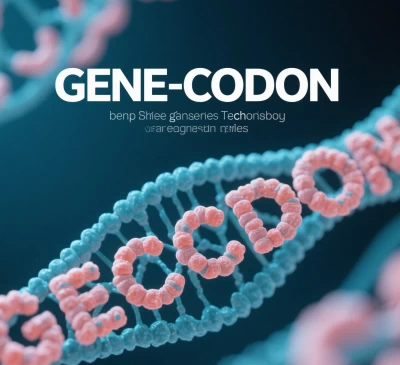
Gene Codon: A Comprehensive Analysis
I. Basic Definition
A gene codon is a fundamental coding unit in DNA or mRNA composed of three consecutive nucleotides (bases). It directs the insertion of specific amino acids or termination signals during translation, serving as the core mechanism for converting genetic information from nucleic acids into protein amino acid sequences—the foundation of the “genetic code” in living organisms.
II. Structure and Classification
- Triplet Structure:
- Composition: Each codon consists of three nucleotides (e.g., ATG in DNA or AUG in mRNA).
- Directionality: Read continuously from the 5′ to 3′ end of mRNA without overlap or gaps.
- Types and Functions:TypeFunctionExamplesStart CodonMarks translation initiation, encoding methionineAUG (eukaryotes and some prokaryotes)Standard CodonEncodes one of the 20 standard amino acidsUUU (phenylalanine), CGA (arginine)Stop CodonTerminates translation (no amino acid)UAA, UAG, UGA
III. Features of the Genetic Code
- Degeneracy:
- Definition: Multiple codons can encode the same amino acid.
- Significance: Reduces the impact of mutations (e.g., leucine encoded by 6 codons).
- Example: GCU, GCC, GCA, and GCG all encode alanine.
- Universality and Exceptions:
- Standard Code: Most organisms share the same codon table (e.g., UGA as a stop codon).
- Exceptions:
- Mitochondrial Genomes: Some species use modified codons (e.g., AGA/AGG as stop codons in human mitochondria).
- Unicellular Eukaryotes: Certain ciliates reassign stop codons to encode glutamine (e.g., UAA/UAG).
- Codon Usage Bias:
- Definition: Variation in the frequency of synonymous codon usage across species.
- Drivers: tRNA abundance, translation efficiency, GC content.
- Application: Codon optimization in genetic engineering enhances foreign protein expression.
IV. Biological Functions and Mechanisms
- Role in Translation:
- mRNA and Ribosomes: Ribosomes traverse mRNA, reading codons sequentially.
- tRNA Adaptation: tRNA anticodons pair with codons to deliver corresponding amino acids.
- Wobble Hypothesis: Non-standard base pairing (e.g., G-U) at the third codon position.
- Gene Expression Regulation:
- Rare Codons: Low-frequency codons slow translation, affecting protein folding.
- Stop Codon Readthrough: Viruses exploit this to generate additional functional proteins.
V. Technical Applications and Examples
- Genetic Engineering and Synthetic Biology:
- Codon Optimization: Adjusts codon usage to match host organisms (e.g., E. coli prefers GC-rich codons).
- Unnatural Amino Acid Incorporation: Engineered codon-tRNA systems introduce non-standard amino acids (e.g., photocrosslinkers).
- Bioinformatics Analysis:
- Open Reading Frame (ORF) Prediction: Identifies coding regions using start (AUG) and stop codons.
- Evolutionary Studies: Codon bias reflects evolutionary pressures (e.g., GC-rich codons in thermophiles).
- Medical Diagnostics and Therapy:
- Mutation Analysis: Missense mutations (e.g., GAG→GUG in sickle cell anemia) cause amino acid substitutions.
- Gene Therapy: Corrects nonsense mutations (premature stop codons) to restore functional proteins.
VI. Comparison with Related Concepts
| Concept | Codon | Anticodon |
|---|---|---|
| Location | mRNA or DNA coding strand | tRNA |
| Function | Specifies amino acids or stop signals | Pairs with codons via base complementarity |
| Directionality | 5’→3′ | 3’→5′ (reverse complementary pairing) |
VII. Future Research Directions
- Codon Expansion: Develop artificial codon-tRNA systems to encode novel functional molecules.
- Dynamic Codon Reprogramming: Use synthetic biology tools to optimize metabolic pathways in real time.
- Codon-Disease Associations: Investigate how codon bias influences cancer mutation hotspots or neurodegenerative diseases.
Conclusion
Gene codons act as molecular bridges linking genetic information to biological function. Their degeneracy, directionality, and species-specific usage ensure efficient and stable transmission of genetic data. From basic research to biotech applications, understanding codon mechanics underpins gene editing, protein engineering, and precision medicine. As synthetic biology merges with AI, codon design will propel life sciences from “decoding nature” to “programming life.”
For inquiries, please contact: chuanchuan810@gmail.com




